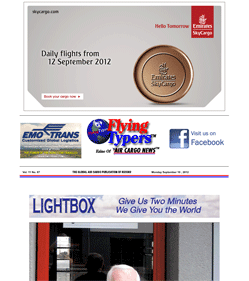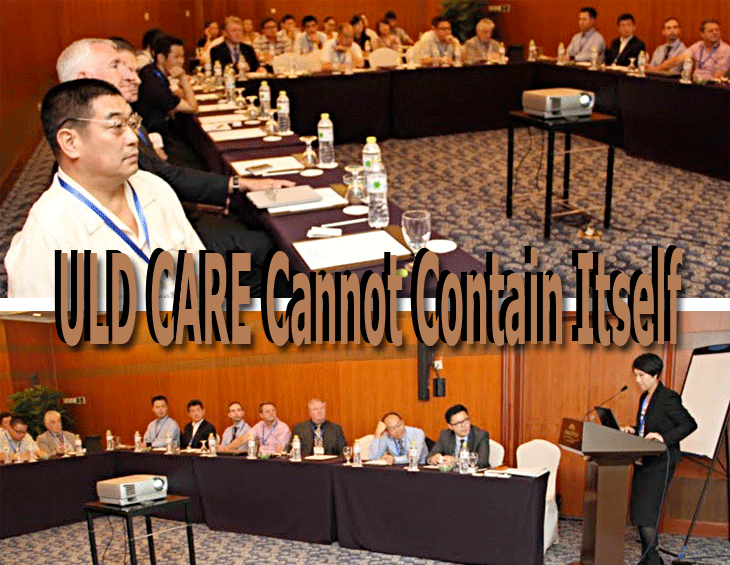
(Shanghai Exclusive)—FlyingTypers
is in Shanghai for this year’s annual conference, marking the
25th such conference for this group formerly known as the IULDUG (Interline
ULD User Group).
The formal sessions, starting Tuesday
morning local time, were preceded by a special meeting focused on
the Chinese airlines and takes advantage of the opportunity to introduce
and involve these carriers in the workings of the IULDUG group, renamed
ULD CARE.
So straight out of the gate, a concerned
industry group has ditched a tongue twisting moniker, preferring to
brand an already complex mission with a comprehensible name:
ULD CARE.
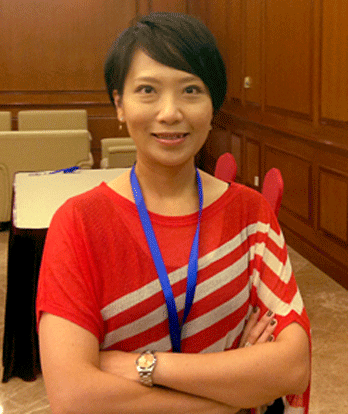 Angel Cheung, General Manager of DAS
Nordisk Limited, which is Hong Kong based, welcomed and addressed
the Chinese audience of 30-plus that represented a cross-section of
the Chinese aviation industry (Kuehne & Nagel, Shanghai; Yangtze
River Express Airlines, Shanghai; CATA, Beijing among others) with
excerpts from the full presentation scheduled for the conference.
She highlighted the networking aspect and learning platform ULD CARE
provides.
Angel Cheung, General Manager of DAS
Nordisk Limited, which is Hong Kong based, welcomed and addressed
the Chinese audience of 30-plus that represented a cross-section of
the Chinese aviation industry (Kuehne & Nagel, Shanghai; Yangtze
River Express Airlines, Shanghai; CATA, Beijing among others) with
excerpts from the full presentation scheduled for the conference.
She highlighted the networking aspect and learning platform ULD CARE
provides.
She went over the vital role ULDs play
in ensuring luggage and cargo are loaded and transported safely throughout
the air cargo chain of participants and how to manage and minimize
risk, whether economical, commercial, or regulatory, and from a flight
safety perspective. Improving ULD management is a shared objective
and the new acronym CARE—which stands for “compliance,
airworthiness, regulations, and education”—fittingly represents
the objectives of the new group members.
In turn, ULD CARE chairman Dick O'Marra
(UPS) extended his welcome to the participants and invited them to
stay on for the full conference.
Angel provided a brief overview of how
the group has evolved since its inception in 1971 by IATA, and set
up for tracking interlined ULDs.
The management tool of ULD CARE is a
global, neutral, multilateral ULD control system that is a proprietary—a
web-based solution for tracking the movements of ULDs that includes
the creation of the relevant ULD movement messages; for example, LUC
from UCR data, converting LUC to MUC, sending MUC to ULD CARE (online
or automatically), and centralizing the data.
ULD CARE is unique in that it brings
together airlines and non-airlines alike, including airports, cargo
terminal operators, civil aviation authorities, ground handlers, and
so forth. Additionally, the members benefit from shared best practices
and learn about industry trends, training in and awareness of ULD
management matters, and the ability to invoice for demurrage and provide
visibility for late or unreturned units.
Following the presentation, a lively
Q&A session ensued involving the Chinese guests, which was translated.
For attendees, the action demonstrated
that there is much interest in the workings and benefits of ULD CARE,
a sign the board took as encouraging future membership.
 A
sampling of commonly expressed concerns was: “How much does
it cost to participate in ULD CARE?”; “What are the message
transaction costs [currently 1.50 USD]” mostly formulated by
Li Ruilin (left) of CATA (China Air Transport Association), a long
time industry veteran and former CAAC representative; “What
is the formula for calculating demurrage?” [The type of ULD/purchase
cost divided by 180 (first 5 days, no charge)]; “How are invoices
issued?” [Using the system in Montreal]. A
sampling of commonly expressed concerns was: “How much does
it cost to participate in ULD CARE?”; “What are the message
transaction costs [currently 1.50 USD]” mostly formulated by
Li Ruilin (left) of CATA (China Air Transport Association), a long
time industry veteran and former CAAC representative; “What
is the formula for calculating demurrage?” [The type of ULD/purchase
cost divided by 180 (first 5 days, no charge)]; “How are invoices
issued?” [Using the system in Montreal].
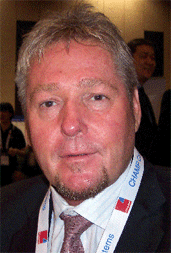 Urs
Wiesendanger, (right) ULD CARE vice chair, explained the option for
each airline to bill another airline or not—an exception to
billing one another would be a bilateral courtesy move, as the ULD
CARE system does not issue invoices and settlement is not automatic
through the IATA Clearing House (ICH). IATA in its largesse wanted
$15,000 USD for providing access to the ICH, and ULD CARE members
elected to invoice each other directly. Urs
Wiesendanger, (right) ULD CARE vice chair, explained the option for
each airline to bill another airline or not—an exception to
billing one another would be a bilateral courtesy move, as the ULD
CARE system does not issue invoices and settlement is not automatic
through the IATA Clearing House (ICH). IATA in its largesse wanted
$15,000 USD for providing access to the ICH, and ULD CARE members
elected to invoice each other directly.
“What is the difference between
leasing ULDs and going through ULD CARE?” Urs clarified that
the group as such does not own any assets, but rather acts as the
middleman to facilitate ULD management.
Furthermore, membership assumes compliance
with IATA regulations, especially when it comes to the handling of
ULDs, something ULD CARE promotes and encourages everyone to abide,
in support of IATA.
A new web-based app has potential in
assisting members to look up what constitutes airworthiness and to
determine the serviceability of a ULD.
“How about the repatriation of
ULDs?” – a perennial concern, which prompted Urs to respond
that group members actively support each other whenever possible,
without bumping revenue cargo, to carry empty units.
The AGM agenda is loaded with both,
group internal structural details as well as industry updates from
the various bodies that affect the ULD business—IATA, SAE, FAA,
CAA (UK) and CAAC, just to name a few. Of interest to all (as mentioned)
will be the topic of demurrage, which affects all the carriers, and
can make or break well-planned budgets when the interchange of ULDs
is not managed and monitored properly.
Day Two features a panel moderated by Bob Rogers of Nordisk, a well-known
and respected business veteran, focusing on the impact of the new
IATA ULD operational guidelines and regulations and how IULDUG could
contribute to fostering industry wide compliance and maintain high
operational standards for ULDs while reducing associated risks. The
panel has a broad representation of global experts from airlines,
airports, ground handlers, freight forwarders, and regulators. Additionally,
ULD leasing companies, equipment manufacturers, maintenance and repair
firms, and pooling and management companies are expected to jump in
the fray to round off the discussion and share their perspectives.
Two afternoon panels consisting of a
similarly broad cross-industry representation aim to address the need
for change, opportunities and challenges, and how to ensure progress.
Day Three starts on a technical note,
looking at innovative applications to asset management for ULDs, while
the afternoon is devoted to the education and sustainability angles,
and resources and objective means to measure progress.
It is a workmanlike conference with
a good portion of the participants already scheduled to exhibit at
the upcoming Air Cargo Forum in Atlanta in early October to drive
the point home to the industry at large that ULDs matter.
Ted Braun |






 Angel Cheung, General Manager of DAS
Nordisk Limited, which is Hong Kong based, welcomed and addressed
the Chinese audience of 30-plus that represented a cross-section of
the Chinese aviation industry (Kuehne & Nagel, Shanghai; Yangtze
River Express Airlines, Shanghai; CATA, Beijing among others) with
excerpts from the full presentation scheduled for the conference.
She highlighted the networking aspect and learning platform ULD CARE
provides.
Angel Cheung, General Manager of DAS
Nordisk Limited, which is Hong Kong based, welcomed and addressed
the Chinese audience of 30-plus that represented a cross-section of
the Chinese aviation industry (Kuehne & Nagel, Shanghai; Yangtze
River Express Airlines, Shanghai; CATA, Beijing among others) with
excerpts from the full presentation scheduled for the conference.
She highlighted the networking aspect and learning platform ULD CARE
provides. A
sampling of commonly expressed concerns was: “How much does
it cost to participate in ULD CARE?”; “What are the message
transaction costs [currently 1.50 USD]” mostly formulated by
Li Ruilin (left) of CATA (China Air Transport Association), a long
time industry veteran and former CAAC representative; “What
is the formula for calculating demurrage?” [The type of ULD/purchase
cost divided by 180 (first 5 days, no charge)]; “How are invoices
issued?” [Using the system in Montreal].
A
sampling of commonly expressed concerns was: “How much does
it cost to participate in ULD CARE?”; “What are the message
transaction costs [currently 1.50 USD]” mostly formulated by
Li Ruilin (left) of CATA (China Air Transport Association), a long
time industry veteran and former CAAC representative; “What
is the formula for calculating demurrage?” [The type of ULD/purchase
cost divided by 180 (first 5 days, no charge)]; “How are invoices
issued?” [Using the system in Montreal]. Urs
Wiesendanger, (right) ULD CARE vice chair, explained the option for
each airline to bill another airline or not—an exception to
billing one another would be a bilateral courtesy move, as the ULD
CARE system does not issue invoices and settlement is not automatic
through the IATA Clearing House (ICH). IATA in its largesse wanted
$15,000 USD for providing access to the ICH, and ULD CARE members
elected to invoice each other directly.
Urs
Wiesendanger, (right) ULD CARE vice chair, explained the option for
each airline to bill another airline or not—an exception to
billing one another would be a bilateral courtesy move, as the ULD
CARE system does not issue invoices and settlement is not automatic
through the IATA Clearing House (ICH). IATA in its largesse wanted
$15,000 USD for providing access to the ICH, and ULD CARE members
elected to invoice each other directly. 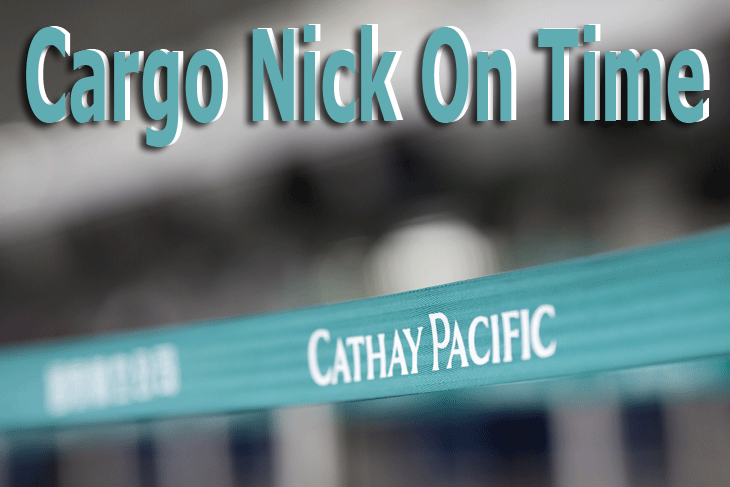
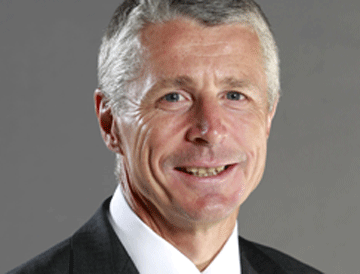 In a press release, Cathay pointed out that the cargo demand in Hong
Kong and Mainland China was “well below expectations”
during the first half of the year, except for a brief hike in March.
Despite these pressures, Cathay launched freighter services to Zhengzhou,
China, in late March. A twice-weekly cargo service to Hyderabad will
start in December.
In a press release, Cathay pointed out that the cargo demand in Hong
Kong and Mainland China was “well below expectations”
during the first half of the year, except for a brief hike in March.
Despite these pressures, Cathay launched freighter services to Zhengzhou,
China, in late March. A twice-weekly cargo service to Hyderabad will
start in December. 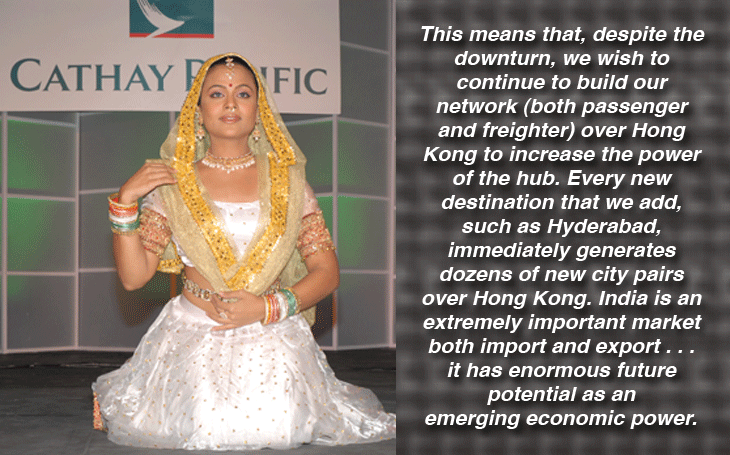 The carrier has had the biggest loss
since 2003 and Cathay Chairman Christopher Pratt has gone on record
to say that the carrier’s business was “significantly
affected by weak air cargo demand,” among other factors. With
Europe and America not doing too well, was it time to concentrate
on intra-Asia growth?
The carrier has had the biggest loss
since 2003 and Cathay Chairman Christopher Pratt has gone on record
to say that the carrier’s business was “significantly
affected by weak air cargo demand,” among other factors. With
Europe and America not doing too well, was it time to concentrate
on intra-Asia growth? As
recently as May of this year, we heard one view that the volatility
in crude oil has been considered the main culprit that triggered the
2008 financial crisis. Closer to the present, it was said that supplies
are decreasing historically and a potential crisis may erupt if either
consumption isn’t curbed or the threshold of USD 4.75 per gallon
is reached, which is deemed to trigger “global demand destruction.”
The report referenced was available in its entirety on the World Bank
website at the time of the 2012 CNS partnership conference and the
data was presented by Charles Schlumberger.
As
recently as May of this year, we heard one view that the volatility
in crude oil has been considered the main culprit that triggered the
2008 financial crisis. Closer to the present, it was said that supplies
are decreasing historically and a potential crisis may erupt if either
consumption isn’t curbed or the threshold of USD 4.75 per gallon
is reached, which is deemed to trigger “global demand destruction.”
The report referenced was available in its entirety on the World Bank
website at the time of the 2012 CNS partnership conference and the
data was presented by Charles Schlumberger.
 Was
driving to work today and saw one of those bright green tennis balls
bounce out of the park and into the street.
Was
driving to work today and saw one of those bright green tennis balls
bounce out of the park and into the street.

